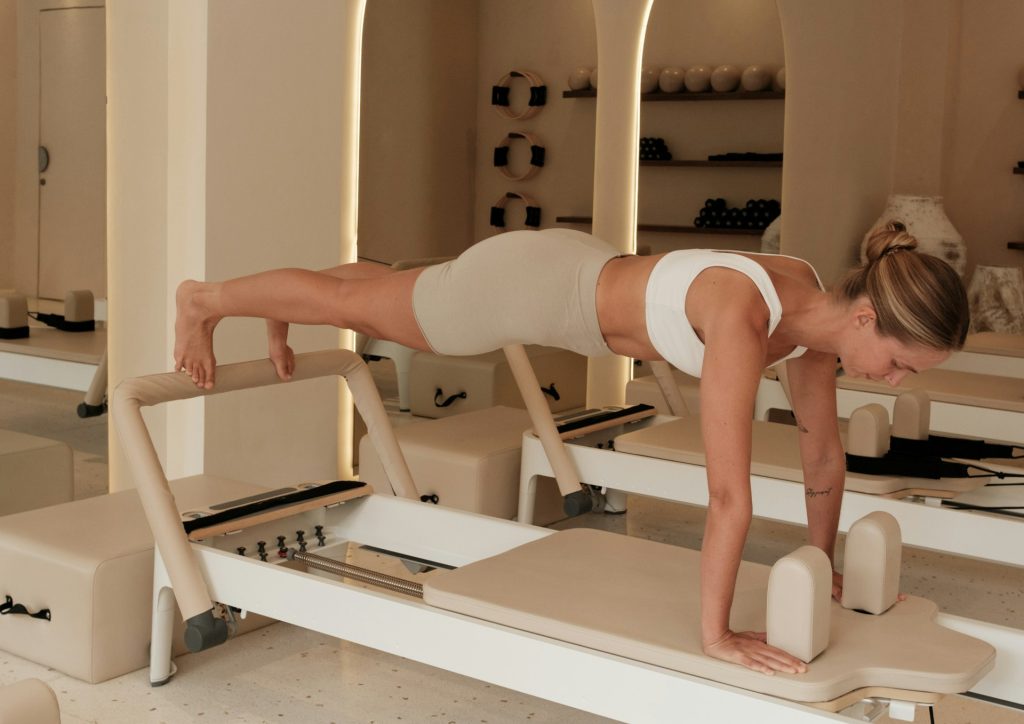5 Habits That Make or Break Your Fitness Results

Why small daily decisions matter more than any workout
Everyone wants visible progress: stronger muscles, more energy, better posture. Yet few realize how much of that depends on habits, not on the workouts themselves.
Most people don’t fail because they train too little. They fail because they repeat small mistakes that quietly undo their effort.
Whether you train at home or in a gym, the habits around your sessions decide how far you’ll go.
At HomeFit Elite, we’ve worked with hundreds of clients across Abu Dhabi: professionals, parents, and executives, and one fact always holds true: results follow consistency, not intensity.
Here are five habits that either build lasting progress or slowly break it down.
1. Skipping the Warm-Up
A strong start protects your body and prepares your mind.
In EMS, boxing, or Pilates, your muscles and nervous system need a gradual transition from rest to action. When you skip that step, your body works harder to stabilize itself, and injuries become more likely.
The warm-up activates the right muscles, improves circulation, and increases coordination so the main workout can be both safer and more effective.
Even a short five-minute mobility sequence before an EMS session can lift performance. Clients who take this step seriously notice better control during electrical stimulation, smoother punches in boxing, and deeper activation in Pilates.
Bottom line: warming up isn’t about adding time. It’s about building trust with your body before asking it to perform.
2. Overtraining Without Recovery
Many people believe that more training means faster results. That belief often costs them progress.
Muscles don’t grow while you train; they grow while you recover. Every EMS impulse, every punch, every controlled movement creates micro-stress. Without enough rest, that stress accumulates.
Fatigue, poor sleep, and plateau are clear signs that your nervous system is overloaded.
High-performing professionals often treat training like another meeting on their calendar: intense, goal-driven, non-stop. The human body doesn’t work that way.
Recovery isn’t laziness; it’s strategy. Between EMS sessions, we often recommend light movement or guided stretching instead of another high-intensity workout. That gives the body space to repair and adapt.
Tip: plan at least one active recovery day each week. We’ll help you find the rhythm that fits your energy cycle and lifestyle.
3. Ignoring Nutrition and Hydration
Training without proper fuel is like driving on an empty tank.
Muscles depend on nutrients to rebuild. The brain depends on hydration to stay focused.
Many assume that exercise alone is enough, but EMS, boxing, and Pilates require precision, and precision requires energy.
Protein supports repair after electrical stimulation. Complex carbohydrates sustain endurance during boxing drills. Proper hydration keeps joints and reflexes sharp.
One of our clients, a finance executive training twice a week with EMS, doubled her progress simply by improving breakfast and hydration. Nothing else changed.
Nutrition is the quiet partner of every transformation. It’s not about dieting; it’s about giving your body what it needs to respond to the work you’re already doing.
Remember: your coach guides your sessions, but your plate continues the training afterward.
4. Lack of Sleep and Routine
No training method can replace consistent rest.
Muscle recovery, hormonal balance, and mental focus all depend on sleep. Most people underestimate how much irregular sleep weakens their results.
Within the HomeFit Elite community, we often track recovery data, and when sleep drops below seven hours, EMS recovery slows, coordination weakens in boxing, and balance declines in Pilates.
Sleep is also where your body consolidates learning. Each new movement or improved form is “saved” by your brain at night. Without that, progress resets.
Our most successful clients are not necessarily the fittest; they are the most consistent. They wake up and train around the same time, maintain stable sleep, and respect rest as much as performance.
Practical step: set a bedtime alarm, not just a wake-up one. That single habit signals stability, and your body responds.
5. Training Without a Plan
Random workouts create random results.
Your body adapts only when it follows a clear structure. That’s why programming matters, especially when using advanced methods like EMS or combining Pilates and boxing.
Every session should serve a purpose: strength, endurance, coordination, recovery, or technique.
When we design programs at HomeFit Elite, we start with your goals and build backward, analyzing posture, availability, and training history.
If your goal is lean muscle tone and posture correction, we pair EMS core activation with Pilates control work. If you need stress release and upper-body definition, we alternate boxing drills with active recovery sessions.
This removes guesswork and builds trust: both in your coach and in your body’s ability to change.
Takeaway: the plan keeps motivation stable when willpower fades..
Where Real Progress Happens
Fitness doesn’t depend on how hard you train in one week. It depends on how consistently you respect the process.
HomeFit Elite clients progress faster because we remove uncertainty.
We guide you through proven methods: EMS, boxing, and Pilates, delivered at home by certified professionals with over a decade of experience.
You don’t waste energy guessing what to do. You know exactly what works for your body, schedule, and goals.
Trust grows when things are clear, safe, and consistent. That’s exactly what we provide.
If you’re ready to train smarter and finally see measurable, lasting results, book your private session today.
Your home. Your schedule. Your results.


